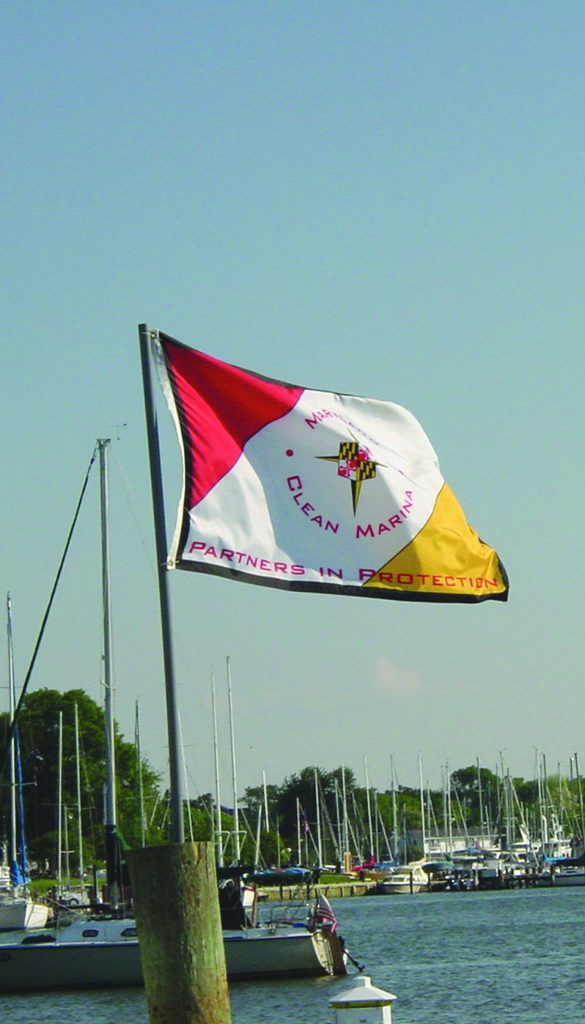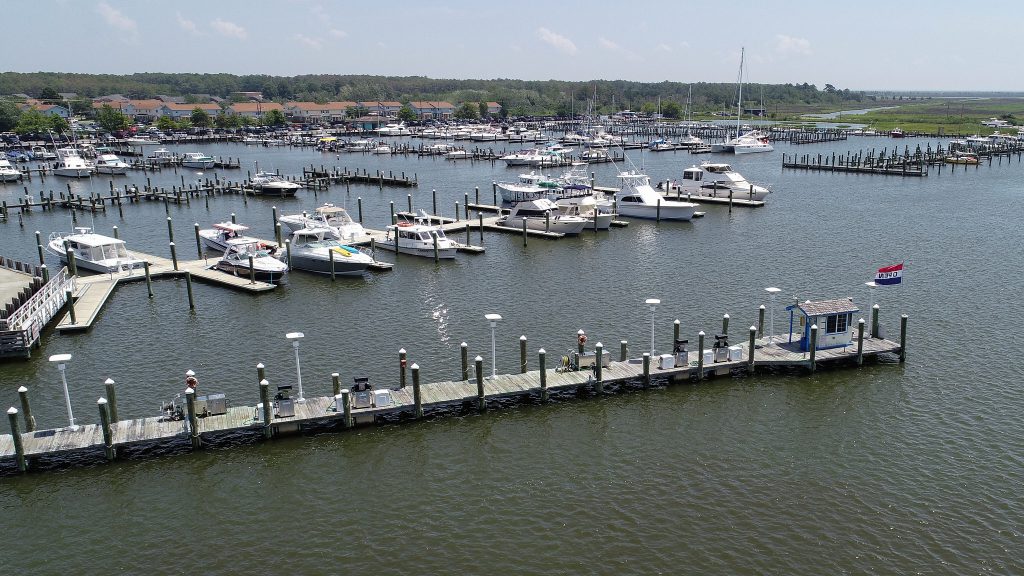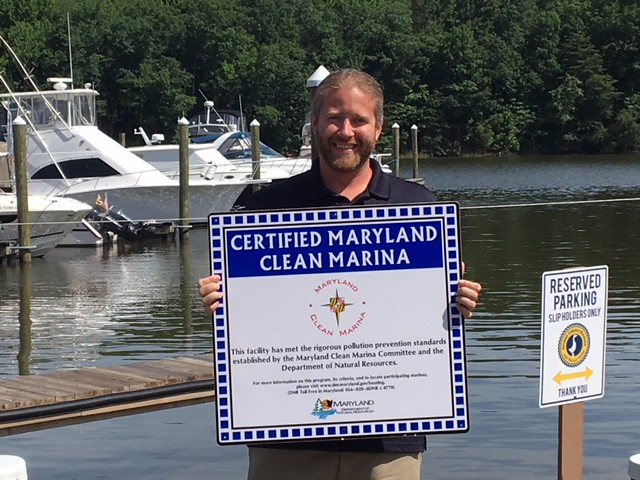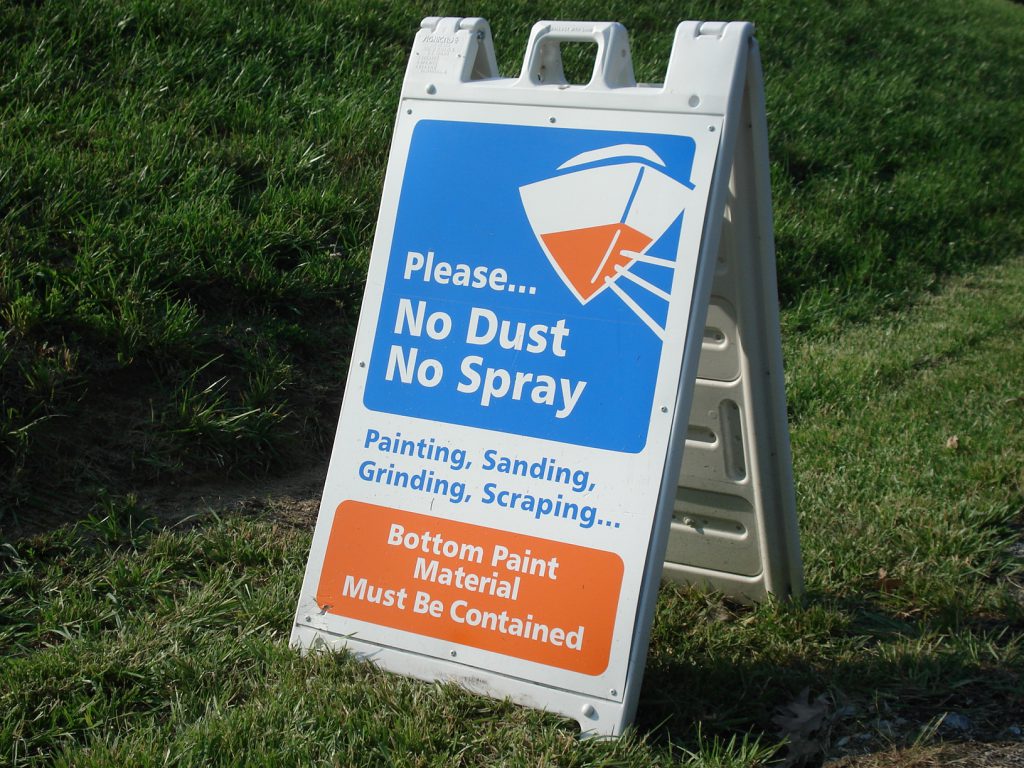Clear Sailing: Twenty Years of Maryland Clean Marinas
For more than 20 years, the Maryland Department of Natural Resources’ Clean Marina Initiative has offered marina and boatyard operators an awards-based approach to protecting Maryland’s natural resources and the technical assistance needed to do so.
The Maryland Clean Marina Initiative recognizes and promotes marinas, boatyards, and yacht clubs of any size that meet legal requirements and voluntarily adopt pollution prevention practices found in the Maryland Clean Marina Guidebook. Twenty five percent of Maryland’s estimated 600 marinas have earned certification as Clean Marinas or Clean Marina Partners (small facilities with very few amenities) and new facilities are added every year. Boaters are also encouraged to prevent pollution from their activities and to choose Clean Marinas. They can take a Clean Boater Pledge and receive a vessel decal.
The origins of the program are tied to federal legislation—the Coastal Zone Act—which was reauthorized in 1990 and identified marinas and recreational boaters (among four industries) as needing to do more to reduce environmental impacts from their activities. Maryland was the first state to launch a Clean Marina Initiative.
Leaders at Maryland’s Departments of Natural Resources and the Environment discussed the best way to address this newly identified segment and decided against developing new regulations which are often contentious and difficult to enforce. Instead, they decided to develop a voluntary, awards-based program aimed at getting marinas and boatyards to improve their standard practices. The program also would have a boater education component.
Once the concept was agreed upon, the department took the lead. Building upon a good relationship with the Marine Trades Association of Maryland (MTAM), a partnership was formed to organize the program with strong industry involvement. A Clean Marina Advisory Committee was established, comprising nine marina/boatyard operators from across the state, Coast Guard Sector Baltimore, Maryland Center for Environmental Training, Maryland Sea Grant, Boat U.S. Foundation Maryland Environmental Service, MTAM, and staff from DNR and the Maryland Department of the Environment—which issues permits and handles enforcement of state environmental laws.
This committee met monthly for over a year to set up the structure of the program, and to review content for the Maryland Clean Marina Guidebook, written by Elizabeth Fuller Valentine. Department staff were often surprised when the marina and boatyard operators on the committee advocated for higher pollution prevention standards than the government representatives suggested.
Through debate and consensus building, the best management practices were established. Based on cost and practicality, practices were grouped as “recommend” or “highly recommended.” The committee also researched and became familiar with the myriad permits, plans, and regulations that impact marinas/boatyards, which also had to be incorporated in the guidebook.
To be certified, facilities must comply with all applicable environmental requirements and adopt recommended best practices from the guidebook. Marina operators select practices to adopt based on their operations and what works best for them. Examples include controlling stormwater (e.g., rain barrels, landscaping, labeling storm drains), creating pollution prevention rules and signs, and training staff on environmental best practices. They adopt as many practices as needed to meet award scores.
The first Clean Marina, Port Annapolis Marina, was certified in January 1999. To become certified, the marina staff take a pledge to become certified within a year, have a site visit with program staff to review how the Checklist criteria apply to the facility, adopt the best practices recommended during the visit, and must pass a site inspection with program staff and the manager of another Clean Marina. Peer review ensures a fair process and gives marina operators a certain sense of ownership of the program. Certifications are good for three years, after which, the marina is re-inspected by program staff.
To help marinas and boatyards become certified, department staff developed a number of tools such as staff training materials and customer education/outreach materials. Department staff also provide confidential compliance assistance and assist in obtaining permits or preparing plans marinas may need but do not have.
 The department promotes Clean Marinas by publishing the list of Clean Marinas on its website; promoting Clean Marinas to boaters in advertising and at regional boat shows; providing the Clean Marina logo for Clean Marinas to use in their own promotions; and providing Clean Marina flags, signs, and window decals along with a certificate signed by the governor and the secretary of the department.
The department promotes Clean Marinas by publishing the list of Clean Marinas on its website; promoting Clean Marinas to boaters in advertising and at regional boat shows; providing the Clean Marina logo for Clean Marinas to use in their own promotions; and providing Clean Marina flags, signs, and window decals along with a certificate signed by the governor and the secretary of the department.
Additionally, marine insurance underwriters offer up to a 10 percent discount for Clean Marinas. Ultimately, the certification is about taking steps to protect the natural resources upon which marinas depend—clean water and air.
The certification process takes anywhere from a few months to a year to complete, depending upon the marina’s starting point and resources of staff and time. Although there can be costs involved in meeting award criteria (e.g., signs, spill response kits), the biggest investment required is time to develop management tools such as record keeping, emergency response plans, and staff training. Once these are in place, they last for many years with regular maintenance.
The original “class” of Clean Marinas from 1999 are below—all of them remain certified today.
1. Port Annapolis Marina
2. Herrington Harbour South, Rosehaven
3. Spring Cove Marina, Solomons
4. Haven Harbour Marina, Rock Hall
5. Baltimore Yacht Club
6. Fort Washington Marina, Fort Washington
7. Hinckley Yacht Services, Oxford (formerly Crockett Brothers)
8. Magothy Marina, Arnold
9. Locust Point Marina, Elkton
Any facility that would like to become certified is encouraged and welcomed to contact Clean Marina Program Coordinator Donna Morrow at 410-260-8773. Readers can learn more about all of the Clean Marinas and clean boating practices at dnr.maryland.gov/boating.
Donna Morrow is a program manager for the department’s Center for Marine and Coastal Stewardship in Chesapeake and Coastal Services. Appears in Vol. 23, No. 1 of the Maryland Natural Resource magazine, spring 2020.




 1-888-373-7888
1-888-373-7888 233733
233733